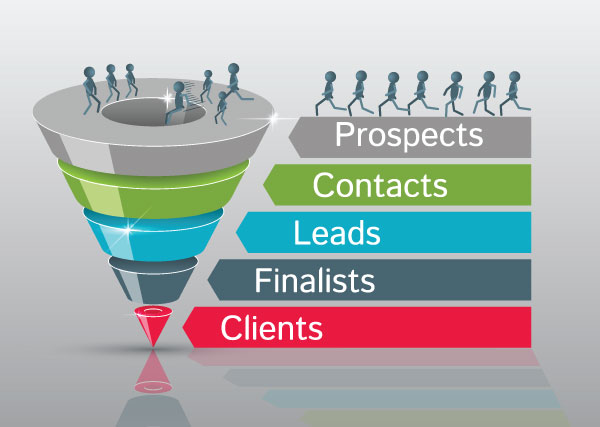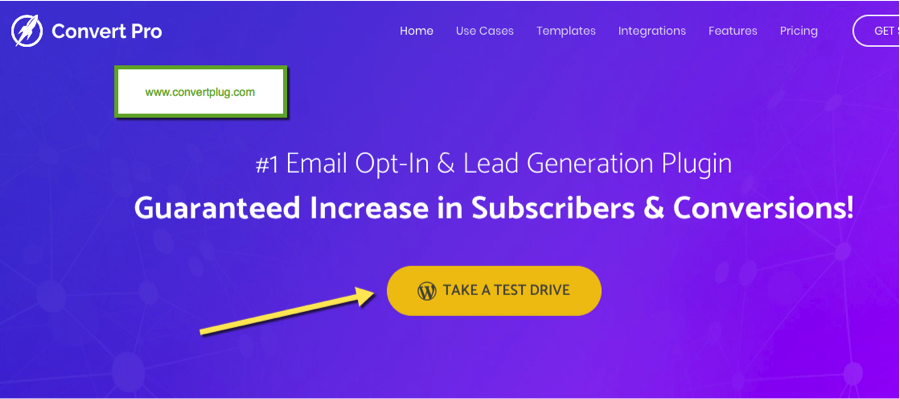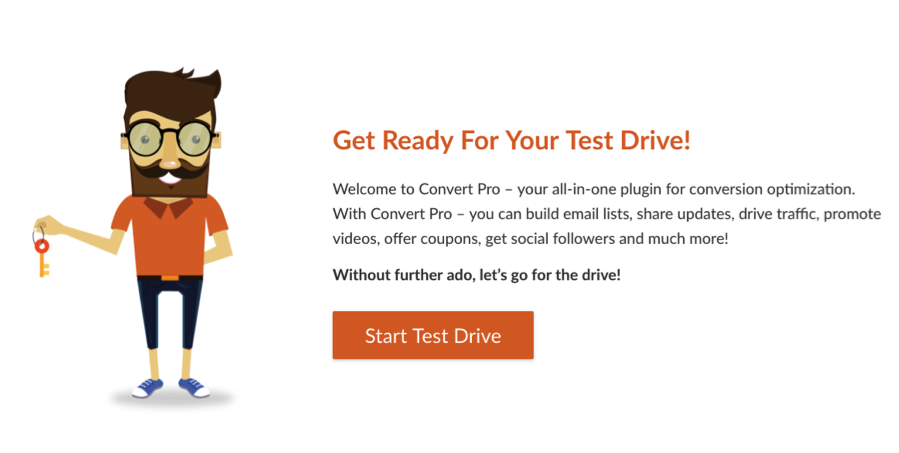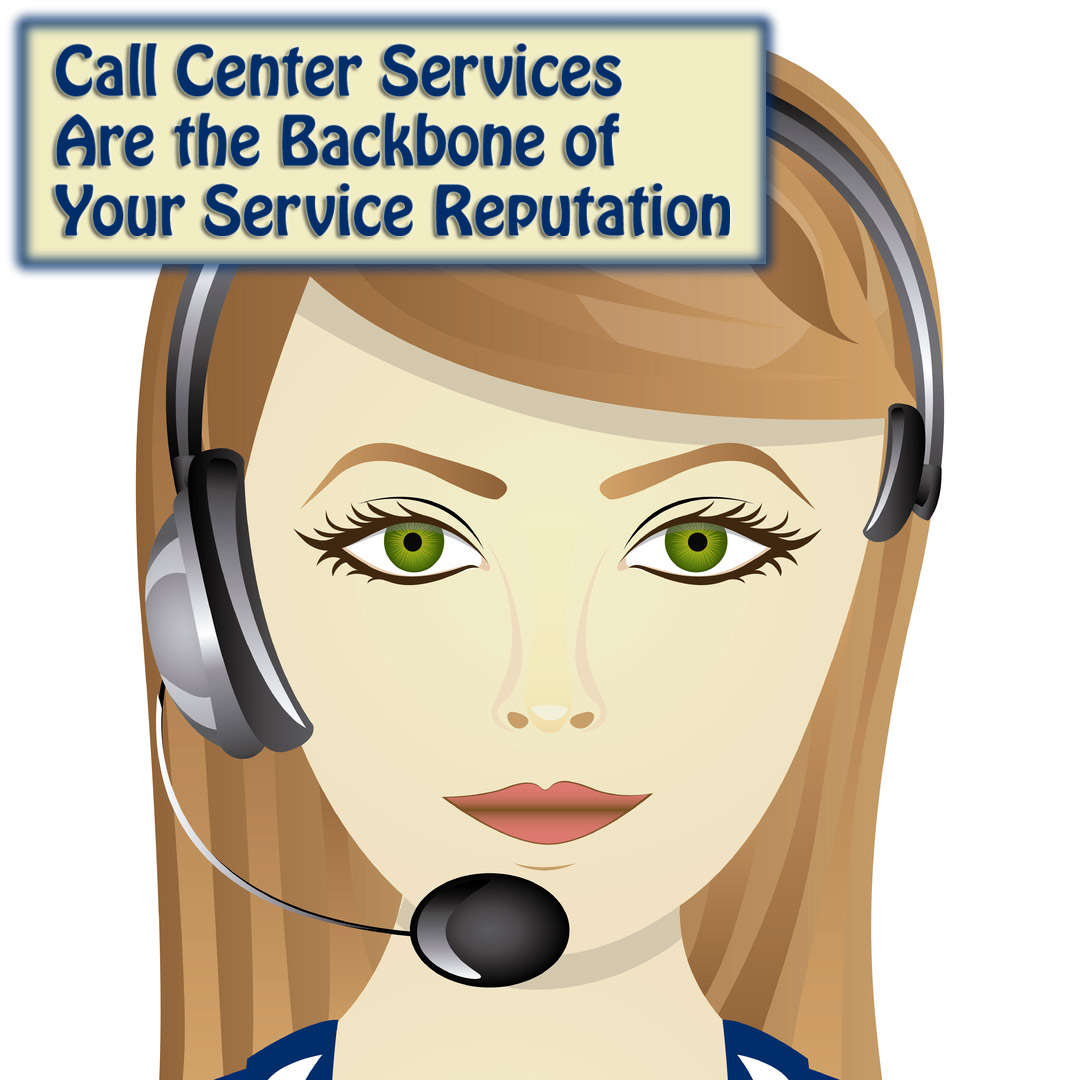

“Yesterday is not ours to recover, but tomorrow is ours to win or lose.” – Lyndon B. Johnson.
Ok, Black Friday is well behind us. So, is Cyber Monday. But, that leaves the holiday season, and more importantly, the New Year ready to go, when it comes to YOU making money!

Sure, sitting down to design a strategy may be ideal. Even hiring a coach to help you develop a strategy for the New Year is ideal. But, who has time for that? And, do you really need it?
You may find it is a bit easier than you originally thought. So, let’s take a look at your options, shall we?
If you have one product to sell, that is great! It is a start!
You don’t have to wait until you have multiple products. And, even if you only have one product to start and add another one, you can link to the second (or third, or fourth…) product from your original page. This would be better than not offering them at all and gives you time until you are ready to do the shopping cart thing.
Sometimes people use sites like leadpages.net to sell their product. This can even be used with funnel system and many times that is an advantage to using systems like leadpages.net. That is an option, even if it is thought to be used for obtaining leads (which is another thought). It can give you an idea of how you want to formulate your page.
Then, again, maybe you want to keep your page simple and just get the nuts and bolts on the page and let the readers buy your product.
The key things are 1) do what makes you the most comfortable; and 2) keep consistent with the theme of your current website. Don’t try to reinvent the wheel to a point where it doesn’t match or fit on the car.
Sidebar: We keep talking about products, but you can also offer services, like one hour of coaching, etc. Even with a shopping cart system (discussed below), you can add those items and when people purchase them, get connected and schedule the consultation or coaching appointment. It doesn’t have to be coaching; it can be any service-related item, as well.
When you do get to a point where you have multiple products, and especially more products than what you can easily navigate on your site manually (meaning here’s a link, here’s another link, etc. and keeping track of them!), it’s time to think about a shopping cart system.
It really isn’t as scary as it may seem. The first step is to breathe and the second is to realize that you can do it. The third step is to realize that the internet is full of helpful guides in getting set up with your shopping cart.
Now for some basics…
There are two types of shopping cart systems (generally):
There are pros and cons to each of them. For example, if you like to keep everything in one place, you may like a shopping cart system that lives within your website. However, it is also possible that it will slow down your site and it will draw resources from other parts of your site, such that the speed of your site is affected. You see, the website (with or without the shopping cart system) is still using the bandwidth that is allotted to you by your web host.

Now for that external shopping cart system…
The con with using an external system is that it is not within your website.
Now, you can link to it easily enough and if you have the link as a part of your navigation buttons on your homepage, people may not even notice that they are not still on your site (especially when you have ensured that the external site matches your website branding).
The advantage to an external system? It is not drawing from your website bandwidth! The shoppers are transported to another place on the internet where they can peruse all that you have to offer them and none of that affects the traffic on your main website or blog. Also, you don’t run the risk of accidentally messing up your own website by modifying your shopping cart system. In most cases, the provider of that shopping cart system already has it figured out, to offer you an easy-to-use application.
A couple of the most popular choices for shopping cart systems are WooCommerce (able to be installed on your website, assuming you are using WordPress) and Shopify.com (an external solution). There is a great guide that explains both of them, along with the pros and cons and the integration options. Check out WooCommerce vs. Shopify: An In-Depth Guide to see for yourself.
Whichever option you choose, whether it is one or two products, an on-site shopping cart system like WooCommerce, an external shopping cart system like Shopify or any other option, you want to make sure you find the best hosting company for the job.
One of the best ways to do this is

There you have it. That wasn’t too complicated, was it? If it was just a wee bit complicated, take a break and read through it again, ensuring that you include the guide, as well. Remember to take breaks so you can ponder what it is that you want for your future success-making, money-making year to come!
The post It’s Time To Make Money With Your Website! appeared first on Dragon Blogger Technology.
You love your blog. You love being in business for yourself. Your dream has come true and you are an entrepreneur! But you don’t yet have a blogging empire.

When you figure out all of the hours you are spending on blogging, you realize that you are not even making minimum wage! You don’t want to admit that to anyone! Now—no matter how much you enjoy what you are doing—you are a little bit sad.
It doesn’t have to be that way. You just need to convert your blogging into a blogging empire! Here are three options that you might want to consider when moving toward that blogging success level.
If you know anyone, such as a parent, uncle, or friend, who could be interested in investing in your blogging empire, approach him or her.
We can call this strategy “blog sponsorship.” Sponsorship is a way to find people with deeper pockets than your own and inspire them to sponsor your blog, usually in exchange for advertising.
Be sure to put together a proposal and presentation (using PowerPoint or something similar) to impress them about what your blogging empire could become with a little infusion of money.
Pretend you are not related to or friends with them, and propose your idea as if they were strangers. You could be surprised. They might invest in the future of your blogging empire!
Using collateral is similar to getting a mortgage. When you get a mortgage, you are offering your house as collateral in exchange for money, which you would usually use to help pay for the house.
This is why banks can foreclose in situations where people haven’t made payments on their mortgages for several months. The banks have the houses as collateral and can now foreclose on them to cover the debt.
For a business loan, it would be better if your collateral were something related to your business. It is an option to take out a second mortgage on your house (or a first if you already paid for your home).
But you should really make this decision along with other parties who might have an interest in the situation (spouse, children, etc.). Of course, if you alone own the house and there are no other parties involved, then it is a decision that you can make.
Just realize what you are putting on the line. Consider whether or not it is a suitable decision for you and your personal life, especially if your business ends up not performing to the level you expect and you have difficulty repaying the mortgage.
This strategy might be a bit trickier, especially if you are new to the game. However, it is possible. Create a product that you can offer on your site. It should be one that manages itself (for the most part) so that it becomes passive income.
If there are multiple products, you will want to consider installing a shopping cart system. If you are using WordPress, you could consider WooCommerce as an option.
And if you have just one product, you could have a product page (without a shopping cart). Look at what other people are doing to get an idea of how you want to organize your page.
Maybe you want to offer something for free and get people to give you their email addresses. Then you can introduce your paid product in the same email with your instructions on how to get the free product.
In this way, you can even advertise on Facebook (a great way to filter to your exact audience) and offer the free product in order to get leads.
Starting with one product is a great way to get it going. You can always add a second product and eventually a shopping cart system when you are ready. Don’t forget to read about growth hacking to really get that launch and sales machine going!
There you have it: three suggestions for how you can take your blogging to the next level and grow those creative skills.
You don’t have to use these options, of course. Maybe they will inspire you to come up with some options of your own. You can also check out the video below for more strategies on how to grow your business.
You CAN transform your blogging into a blogging empire. The key thing is that you believe in yourself. You can do it!
The post Creative Ways to Move Your Blogging Empire Forward appeared first on GrowMap.

The post Capitalizing on Healthcare SEO and Content Marketing When the Niche Calls for It appeared first on Marketing Insider Group.
You have all heard the term, “funnel,” right? There are so many buzz words and branding out there that surrounds the concept of funnels, including #marketingFunnels, the brand #ClickFunnels, #salesFunnels, #LeadGeneration, and more. We could almost have a game to see who could come up with the most buzz words that are related to funnels and all of us would be winners!
Great, we know how to play word games, but what does all of this mean to us and why should we care?

The funnel is not a new concept. Neither is lead generating or emailed newsletters. Basically, we are specifically referencing terms and concepts within the internet marketing world and more generally, the marketing world.
The idea of a funnel is just like it sounds. Or, better yet, it is just like it looks. We are funneling people where we want them to go. Also, as a part of that funnel, we don’t want to lose them. So, for example, maybe we cannot convince our clients to pay $1 million dollars for an afternoon of our coaching service (then, again, maybe we can), but if that client is willing to pay some money, we don’t want to lose them entirely, do we?
A funnel can be as simple or as complicated as you want it to be, whether it is a case of keeping a lead (potential client) within the funnel or trying to guide them to a specific objective.
The reason that you should care about a marketing funnel is that likely you want to make money. If you don’t want to make some bucks online, you are likely doing something other than reading this article. See, even if you have a day job, a couple of extra bucks to go on vacation or buy your favorite game or entertainment device is a fun thing to have. At the very least, it may be interesting to take note and understand funnels and specifically marketing funnels.
So, in an effort to keep this simple, let’s breakdown our audience into two general groups. Again, the key phrase here is “simplified.” This is not an exhaustive list, but just a point of illustrating our interest level, to demonstrate that funnels are likely of interest, on some level, to the far majority of people online. One group are those of you who already know about funnels, at whatever level that is (newbie to pro). The other group are those of you who do not know about funnels or do not have a need for them. Really, it doesn’t matter which group you belong to because if it is something that interests you, you will likely continue to read about funnels and how they can help you.
So, for starters, you would want to ask yourself if you want a funnel. Pretty much, if you are into marketing, or doing any sort of business online, you likely want to answer “yes” to that question. In other words, if you are attempting to make some sort of income from online endeavors, even if it is only to complement the current offline job that you have, you pretty much need some sort of marketing efforts. And, funneling your leads into a position to become customers, is a basic component of online marketing (a.k.a. internet marketing).
Check out this article to learn more about funnels and how they relate to online marketing: How Marketing Funnels Work from the Kissmetrics.com blog.
Now, if/when you implement a marketing funnel (a.k.a. funnel), you will want some sort of method of converting the site visitors into customers. That method or process can vary. Possibly, you have hired an agency to do it for you. Maybe you have signed up for a program that does most of the strategizing for you and you fill in the blanks. Or, maybe you are a do-it-yourself (DIY) type person and pulling all of the components together yourself and planning your own funnel. You are the type of person who likes to spend your money wisely and manage all aspects of your conversion process. If you are a DIY person, you will definitely want to look at what type of software or application will assist you on your site. If you are using WordPress, that may be a WordPress plugin. So, let’s start there and specifically look at a plugin that I just recently found, called Convert Pro. This plugin will take care of the aspect of converting those site visitors into members of one or more of your email lists (part of your funnel).
Don’t worry if the concept of marketing funnels are confusing at first. Give it time and it will make more sense.
Finished! … Sort of Finished …
A sandbox is what we call a mode that we can do testing, as developers or programmers. The sandbox allows us to test things, in the same way that a real sandbox allows us to get our hands dirty and play with the tools that allow us to build those sand sculptures (ok, an ocean helps with that…). Do it in a sandbox means that it is not connected to what is called a production server and not affecting anything that could be detrimental to our business. It allows us the perfect opportunity to test, in this case, what the Convert Pro plugin does.
| Sandbox Step 1: Visit their site at http://www.convertplug.com/pro Click on “Take a Test Drive.” |
  |
| Sandbox Step 2: Click the button to let the nice cartoon guy create a test site for you. |
  |
| Sandbox Step 3: You have a WordPress site that looks like a real WordPress site! That is because technically it is a real WordPress site but it simply isn’t your blog. Instead, it is the “sandbox” where you can see what this plugin does. Don’t you wish all plugins had this option? That is what sets Convert Pro (and BrainStormForce) apart from others. |
  |
| Sandbox Step 4: Proceed with Your Test Drive. Remember, don’t let all of the WordPress stuff confuse you. You are not here to set up another WordPress site (though you may use some features for your testing in the same way that you would use sandbox tools/toys with a real sandbox). Instead, you are here to test Convert Pro, so go ahead and click on “Convert Pro” at the left-hand side of your screen and let’s start testing. |
  |
Yes, it is true that there are many WordPress plugins that perform this step in your marketing funnel. And, I have tried quite a few of them.
What makes Convert Pro so special? One thing that I like is that you can use as much or as little of the plugin as you want? I know. That sounds odd. What I mean is that there is nothing that says that you have to x,y,z in the process. But, if you are someone who wants to have ultimate control, you can manage different aspects of the plugin. In other words, you can get a bit more detailed if you like.
Also, this plugin seems to have a good support system. That is very important, especially if/when you need help.
But, the most special aspect? Maybe this sounds odd, but I really like that there is a sandbox version of this plugin! Yes, I have seen trial versions of some plugins, but then many times it is one of those cases where you have to give your credit card and then you forget and you end up paying for something you forgot to fully implement because you were thinking it was a trial.
Not the case with Convert Pro! In this case, you actually get to sign up for that sandbox method and feel like you are in the driver’s seat! You get to try the plugin enough to determine whether you want to move forward or not.
What is the next step? I would say that if you haven’t tried it yet, scroll up in this article and follow the steps to go try out Convert Pro for yourself. Then, you can make that decision of whether or not this plugin will help you move future customers and clients through your online marketing funnel system, resulting in cash in your bank account. What do you think?
The post Creating a Dynamic Marketing Funnel with Convert Pro Plugin (even if you are confused by funnels!) appeared first on Dragon Blogger Technology.

Even as news cycles usher in financial news that topples itself before it rolls off the page, bitcoin still has an air of mystery to those who were not classified as members of the group of early adopters. This is especially true within the context of holiday shopping and consumer interest. And yet, bitcoin is so much more than the sum of its parts or a simple definition involving consumer interest.
A deeper analysis provides an articulation similar to a qualitative methodology in a psychology research paper. The qualitative methodology provides a description or definition of that which is studied, in this case encompassing the financial industry.
In order to properly understand all of the terminologies that fit into the broad category of cryptocurrency, there needs to be a trip back in history. Fortunately, it is a very short history and it shares commonalities with other facets of a shared industry.
Back when ATMs (automated teller machines) came on the banking scene, they were all the rage. Now a person was able to obtain cash during non-banking hours. ATMs released the tethers that bound them to banks and long bank waiting lines. It did not take very long for ATMs to become commonplace and existing as if they had always been a part of the personal (and business) banking scene.
To some extent, it may be said that fintech began, even then, at the inception of the ATMs. Yet, the word, ‘fintech’ has its own history and evolution of definition. For more on fintech, read this interesting bit of fintech history.
Fintech, like it sounds, represents financial technology, at least to an extent. It would be similar to the way that a carpenter would view his tool belt or a concierge doctor would view his medical bag. Fintech represents the technological financial tools necessary (or at least desired) for managing a modern banking presence.
In its simplest form, fintech would involve using a computer, internet connection, and the ability to move money between accounts, even at different institutions. PayPal is representative of all that is modern in the area of fintech and yet there is more to be discovered than even what PayPal represents.
But, fintech is more than that, representing a required stage on which a cryptocurrency dance takes place.
Wealth management, as it sounds, is the management of wealth. It isn’t as if the stockbrokers on Wall Street (or their counterparts in Century City, California) hang shingles that say “poverty management.” As if predicting the future, the idea behind the management of wealth is also the growth of wealth. In doing so, there is the investment portfolio, the stock market analysts, and whomever is found to do it best (resulting in the largest net worth and the most impressive wealth jumps). Hollywood Hills joins with Beverly Hills to stare down the cocktail parties produced as a behest of the stock market directives of Wall Street.
While the wealth marches forward on both coasts of the United States and now around the globe, thanks to the inception of such wealth opportunities as cryptocurrency, there are the stodgy, proven methods of investment portfolios of the past. There are also the bygone stories of the Great Depression and the not too far distant Madoff Madness. The world was ready to listen, to partake in what might be new and might make a larger jump into super-wealthdom.
The culture was ready for it. The culture was ready for something.
Explaining what bitcoin is, is almost as difficult as explaining ATM to those who lived in the 19th century.
A visualization of something like a blockchain might include a picture along the lines of an abacus laden DNA strand building upon itself, into the near and yet far off future. The picture helps but does not define the bitcoin or blockchain.
Bitcoin is like virtual money, existing in the cloud as if it doesn’t exist and yet not existing to a point where it is used more and more in virtual transactions. It is a contradiction and yet an intriguing mystery. Bitcoin offers freedoms from the known. It presents questions, as well. Bitcoin lends itself to the mystique of the Swiss bank account concept.
Two aspects of definition that help to label the understanding of bitcoin in its simplicity are the following:

When opening the mail and specifically the bank statement, a consumer (or business owner) may desire to follow his or her banking activities line by line to see the incoming and outgoing money trails. Similarly, there are the inroads and outroads, the incoming and outgoing of bitcoin. Since it is cryptocurrency, involving a language of cryptography, it still requires some sort of proof, as mentioned above, of its existence and acquisitions and spending. That is where blockchain enters in as a sort of bitcoin bank statement but in cryptographic terms. It is proof of bitcoin acquisition and spending. The blockchain is like the DNA strand of the bitcoin transaction chain.
In the news, companies are helping to bring about the best of both worlds, that of the financial world that has evolved into something that is understood and managed and that of the new cryptocurrency that promises growth opportunities in wealth and wealth management.
Everyone has an opinion, including Cyril Fazel, in this Forbes guest article discussing the ICO 2.0 and history repeating itself, “dot com style.” Keep in mind that history does repeat itself and even paper money has its gold-based counterpart. So, with all of these new (and old) technologies, where do you see cryptocurrency going in the next year? So, can you see what companies are doing when they attempt to bring some level of normalization, without destruction of what is new and exciting? And, are you going to be a part of the next generation of cryptocurrency investors yourself?
Are you the owner of a brand new business? If so, there are certain factors that you need to keep in mind. One of the most important things that will quickly guarantee the success or failure of your business is your reputation – positive or negative – in the area of customer service. If you can quickly gain an excellent repute in this crucial area, you will very likely be able to survive your “make it or break it” first quarter. If not, there is no telling what may happen. Even if you have gotten off to a rocky start in this area, you do have a chance to turn it around.
You need to understand that providing state of the art customer service will be a make or break factor in the success or failure of your business. To guarantee your success in this area, you need to make full use of all of the available aids. For example, your official company website should be equipped with an ecommerce call center. This is a feature that will give your customers the chance to contact your business with any questions, complaints, or general comments that they may wish to pass on to you.

It should be understood that you will not have to handle the entire volume of calls completely by yourself. On the contrary, you can outsource these calls to a reliable and professional call center that can handle them on your behalf. If you are the sole owner and operator of your business, chances are good that you have plenty of other tasks to see to that don’t involve spending hours on the phone with customers and clients. Even if you have a team of employees, they surely won’t want to be tied up on the phone instead of attending to their own duties.
As noted above, outsourcing your calls to a reliable third party call center will increase the productivity of your business. You can get on with the important day to day tasks, such as ordering new product or making posts to your website, while others handle your incoming calls. This gives you the freedom to make important decisions for your business without having to be constantly distracted by outside factors. While you are busy making important decisions for your business, you will have the satisfaction of knowing that your customer calls are being handled with the utmost care.
There is a major advantage that comes with outsourcing these important customer calls. Not every business owner is cut out to handle their own interactions with the public. If you don’t possess a soothing voice or outgoing personality, it is probably for the best that you leave customer service skills to a talented professional. The greatest gift that a call center can give to a business is the ability to handle customer calls with courtesy, tact, and full consideration. This is a skill that needs to be honed by a professional on behalf of a savvy business owner.
You’re reading Call Center Services Are the Backbone of Your Service Reputation, originally posted on Kikolani, authored and copyrighted by Deborah Anderson.
It is often said that all large companies need contracts, as contracts are essential to their business. It seems to follow from that point they also need some sort of contract management. In order to accommodate contracts in any business, a company needs to adopt a defined protocol. In that way, there is a process by which contracts are handled.
Protocols and procedures likely include specific people who manage the contracts and handle them at specific points in the process. For example, maybe there is an intake person, a follow-up person, and the one who actually reviews and signs the contract. Many times, this is General Counsel at the company and he or she gives the “ok” for the head of the company (CEO) to sign the contract.
It is not unlikely to expect that medium-sized companies have some sort of protocols in place for the management of their contracts. However, it is also possible that medium-sized companies that have grown from very small companies may have forgotten to take the time to strategize contract management strategies when concentrating on company growth.
However you look at it, contract management is important. It is essential for large companies. Essential means that the large company truly cannot exist without it. But, for medium-sized companies (especially those grown from a small company size), there may be this belief that they can survive without contract management. This misconception comes from the fact that they did not need it when they were still small.
Once there is a decision to move forward with contract management, the next step is to define the process. This involves people taking on different aspects of the contract. There is also the actual processing, that may not include people. In this case, a medium-sized company should consider using an automated contract management system.
The idea of automation, when it comes to contract management, is that it offers a solution to the identified issues that some medium-sized companies have when it comes to contract procedure(s).
When you have a small company, it is easier to remember contract deals off the top of one’s head. It is not entirely impractical to use one’s memory to anticipate discussions with clients when it comes to contracts.
Or, other small, less-automated tools may be used. Someone may be using an online project management site like Trello or Basecamp to organize notes. While those are positive business practices in and of themselves, they don’t address the need for a management system for contracts. However, when it is a small business, there is not that obvious need because of the nature of the company (i.e. fewer clients, less potential for a hassle).

But to build a small business to medium-sized business, it requires more activity and attention. It usually results in acquiring more clients for the company in order to grow into a medium-sized business. When the business reaches the point of being a medium-sized company, there is much more to manage when it comes to contracts.
We mentioned some online tools that may be helpful for small businesses. However, if we imagine using those same tools for medium-sized companies, it becomes complex. How does one retrieve contract details at a moment’s notice, when there is no contract stored for convenient access?
Easy access is one of the benefits that come with a centralized automated contract management system. In this case, the employee at the medium-sized business can retrieve the contract at a moment’s notice. It is about as easy as pulling up a digital Rolodex card.
This also creates a need, and therefore a reason, to incorporate procedures that are easy to follow and familiar to maintain. This helps the employees to feel as if they understand their job and gives them more confidence that they have done it correctly.
A systemized, automated contract management system has so many benefits when compared to one that is not automated or not set up at all. They are likely more easily recognized after the system is implemented and the medium-sized business realizes the efficiency, ease-of-use, and other benefits.
One such benefit is the ability to duplicate a contract and then create a unique approach to that contract. This is essential when dealing with larger clients who may want customized offerings.
What is the purpose of that action? It is helpful if you want to run a special deal, or prepare for a holiday season sale. It is particularly helpful if you decide to run such a sale at the last minute.
Instead of relying on your memory or worse yet, moving forward without a contract, you have the ability to grab the digital version of an existing contract (or its template) and duplicate it so that it can be modified for your sale or business transaction.
This allows opportunities to focus on the growth (especially that which comes with a special deal!) rather than getting tied up with the details of the management of multiple contracts.
There you have it — these are some benefits that you will receive if you choose to implement some sort of systemized contract management system in your medium-sized business. Of course, you can still use the system if you are a small business and, in that way, you would be ready for that growth as you prepare to emerge as a medium-sized business. Maybe, it will even free you up from some of the paperwork… enough to make that leap!
You’re reading Intriguing Benefits for Medium-Sized Businesses Needing Contract Management, originally posted on Kikolani, authored and copyrighted by Deborah Anderson.
Someone bought a product from your online store. How does that feel? Pretty terrific, right?
It is eCommerce at its best, isn’t it?
But, then, for some of you, it is old hat. Or is it?
Granted, compared to the Mayflower, it is very new. But, it has been around for a while. (Can you imagine that there was even a time when PayPal didn’t exist? Yes, paying by “email” used to be a foreign concept.)

The reason I am calling this a mini-course is because it is a quickie listing of some of the things that you will have to consider, as an online ecommerce store owner.
Ok, so back to our customer that just made a purchase. We are excited, aren’t we? But, now what? Do you let it go by the wayside or do you give them extra attention to make them want to return?
This is the beginning of an entire list of things that could come to mind and possibly overwhelm us in our efforts to master the art and science of success in the ecommerce world.

This question is probably pretty easy to answer. Ecommerce is important to us because we want to make money and either 1) we have already been doing it to some level of success online; or 2) we have heard that the online money-making process is intriguing and may be our “thing.”
Ok, let’s take a moment to understand that eCommerce is not some sort of “get rich quick” scheme. But, then, I know you already knew that. It doesn’t mean that we can’t take the few moments that are required to learn the science of success with eCommerce, apply that, and find our own secret sauce that works for us.
So, back to our mini-course and what we need to understand about ecommerce success.
The first step is to understand just how important the customer is. I mean, without the customer, you wouldn’t have the sales and without the sales, what value does the ecommerce have?
That is the easy part, accepting that we need to focus on the customer. After all, that is the title of this article, understanding the customer, as well as the personas. In this way, we can adapt our eCommerce site to the customer and the customer’s buying persona.
In psychology, we learn about behavioral patterns and the similarities between people, when it comes to behavior patterns. It is like people can be somewhat grouped according to their behavioral patterns. That is part of what identifying the buying persona relates to, in understanding the person, their persona, and specifically how that relates to their buying behavioral patterns.

So, what is this word, persona? To simplify it, it would be the buyer persona. So, you may have different personas for the people with whom you deal. You may have investors, coming under the category of investor persona. You may have partners, coming under the category of partner persona (but, I wouldn’t recommend over-analyzing your partners as they may not be thrilled with you!).
In a more complex or advanced view, you may have several different buyer personas. You may have the reluctant buyer persona, the one who doesn’t spend money without a threat of doom or an arm twisted behind his or her back. You may have an “easy come easy go” buyer persona which is the buyer who spends on anything and everything (and is likely the one who would ask for the refund the most readily).
Do you see what I am doing here? I am actually starting to describe the personas for you! That is a place to start.
So, what we are really doing, is describing a sort of behavioral pattern and then smacking a label on it. It is easiest if we picture a type of buyer when we do that. Then, describe that person we are picturing in our mind. But, do you know what is easier yet? Go back to the name of this step, in not trying to over-complicate it, and just stick with the “buyer persona” for starters. We can always come up with variations on those personas later. But, we recall that we don’t have to learn all of this in one day.
Or, Know What You Know and What You Need to Know.
We have covered the step about understanding that we don’t have to build Rome in a day, but that doesn’t mean that we sit back and eat bonbons and watch TV, hoping that our ecommerce site works out on its own, without our intervention or management.
When we are ready, we can dig in deeper and build a more detailed buyer persona and when we have figured out what those are, add more. By taking these steps (when we are ready), we can apply that to our online store in a manner that helps to address all of the potential buyer personas and have a better chance of pleasing them and more importantly, negotiating that sale! But, we need to stay balanced while we edge our way forward in this journey, right?
No, we need to figure out what we need to learn. Take it at a reasonable pace and apply what you can without burning yourself out and crashing. What I have found is that it is helpful to identify what you want to study (learn) each day and then scale it back to about 50% of that and implementing 25-50% of that per day. Also, allow certain days to be your day off, like maybe a Wednesday in addition to a day on the weekend. By taking these steps, you can help to balance your time, ensure that you are more likely to be consistent, and help to avoid that dreaded burnout and crashing moment (which I hope none of you experience!)
That was a bit of a confusing description? Let’s simplify it. Stay balanced and don’t bite off more than you can chew at any given time. How’s that?
See a pattern here?
True story >> I once nicely asked someone why it was that my monthly subscription was not available for download. Their response was a bit curt. It was as if he was saying, “You should know better than to ask me because it won’t be ready for one more day, even though you already paid for it two days ago.” Nowhere on their site was there any sort of explanation and even if there were some sort of explanation, could he not have added warmth? A response like, “Oh, we are so appreciative of your monthly subscription and patronage. We may have forgotten to let you know that sometimes the downloads take a couple of days to appear on the site, but if that causes any difficulty, please do let us know. We aim to please!”
Now, which response is going to keep YOU as a customer? I agree. The warmer presentation is going to go a lot further.
Show the warmth!
This is a great place to review our descriptions of the buyer persona(s) and understand how each persona responds to messaging. Some of this can be done with split testing. But, some of it is common sense. While I recommend, in steps one and two, to start with one buyer persona, let’s pretend that we have defined multiple buyer personas, ok? In that case, if we have a buyer persona that is more sensitive and especially when it comes to messaging, they will need that warmer response. However, let’s say we have a buyer persona that will buy no matter what and does not require the “touchy-feely approach.” What about messaging? Well, two things about that buyer persona, 1) Find out how you found that buyer and find more of them! Also, ensure the retention and loyalty of that type of buyer to reduce refund requests, etc., but that is beyond the scope of this article; and 2) the warm fuzzy messaging is not likely to deter this buyer, based on the buyer persona, so there is nothing that is “lost” in creating that warmth, because it will likely help with other buyer personas.
Excellent customer support and service is a requirement if you want to succeed online. If you are wondering about that, check out my little story, above, about warmth and presentation. Sort of drives it home, doesn’t it? But, keep in mind that there are different needs for different buyer personas. Also, keep in mind that we are keeping it simple, to start. You can always bookmark this article and come back later to dig in deeper, right?
All sorts of ideas can come to mind when you start to brainstorm on how you can serve your customers, eh? As you make your list, keep in mind that you want to build customer loyalty. Ask yourself what you can do to help to attract your customers, help them to have a pleasant experience, and retain them as customers.
And, start with that buyer persona. Put yourself in their place and ask what you would want to see on your eCommerce site. Great place to start and there is always room for growth beyond that.

Need some help with your blogging and merging your ecommerce efforts with the benefits that can be derived from blogging? Get ready for a roller coaster ride, but one with benefits and some great ROI (return on investment) from my own personal experience >>
Learning to Blog and make money! with Blog Income Recovery.
and don’t forget the companion course >> SEO for your Blog! Bundle: Easy On-Page SEO + Easy Backlinks for SEO and also, add to that, the implementation of the concepts in DotComSecrets at amazon.com (affiliate). I've used these and can personally recommend it!
There is always a terrific feeling when someone buys a product from your online store. Most people will agree that eCommerce is an amazing thing when it works as intended. What if I told you there are simple ways to make your online store sell even more?

Overall, not too long ago, eCommerce was considered fairly new. Some people may not remember, but there was a time when PayPal did not exist. People used to pay by “email” back then, which is a foreign concept to most young people. That being said, selling online is the future. In order to improve your online business, there are a few adjustments you can make.
As an online ecommerce store owner, there are a few quick changes you may want to consider. There are several different ways to implement an eCommerce website, but for the purposes of this article, we are going to use Shopify as an example.
Imagine a scenario in which a customer just now makes a purchase. While it is exciting to make the sale, a salesman must also consider his or her next move. Rather than let it go by the wayside, as a business owner, you should do whatever is necessary to encourage that customer to return.
There are many different techniques for influencing customers, and the sheer number of possibilities can be overwhelming. Learning these techniques, however, is the fundamental key to mastering the art and science of eCommerce. In order to make things easier, let’s focus on understanding the customer and applying what we learn to handle our online store.
This question is probably pretty easy to answer. eCommerce is important to us because we want to make money and either 1) we have already been doing it to some level of success online; or 2) we have heard that the online money-making process is intriguing and may be our “thing.”
It needs to be understood that eCommerce is not some sort of “get rich quick” scheme. Anyone who has any real experience with it should already know by now. However, eCommerce is something that can be learned, and therefore, converted into profit. Any online veteran will tell you that the road to eCommerce success involves understanding customers.
The first step is to understand just how important the customer is. Without the customer, you wouldn’t have sales, and without the sales, eCommerce has no value.
Having accepted that you need to focus on the customer as a human being. This is very important.
Or, Know What You Know and What You Need to Know.
First, you need to figure out what you need to learn. Take it at a reasonable pace and apply what you can without burning yourself out. One method is to identify what you want to study (learn) each day and then scale it back to about 50%. Implement only about 25-50% of that per day. Also, allow yourself to take days off. In addition to a day on the weekend, consider taking a day off in the middle of the week as well. By taking these steps, you can help to balance your time and ensure you are more consistent.
The following article, from Shopify’s blog, provides some actionable steps and strategies that you could implement today to improve your ecommerce site. The article is “The 10% Strategy: Growing Your Business by Making Small Incremental Changes.” A quick Table of Contents (TOC) or index of the strategies listed in that article include:
It is interesting how the outlined list of strategies, above, is a part of an article on 10% improvement tweaks that help to bring success to your online Shopify store. And, at the same time, the step of learning, understanding, and adapting, is also about moderation and ensuring that we move forward each week at a reasonable pace. Just as stated above, we shouldn’t try to do it all at once so that we crash and discontinue our strategy for success. See a pattern here?
We have covered the step about understanding that we don’t have to build Rome in a day, but that doesn’t mean that we sit back and eat bonbons and watch TV, hoping that our ecommerce site works out on its own, without our intervention or management.
No, we need to figure out what we need to learn. Take it at a reasonable pace and apply what you can without burning yourself out and crashing. What I have found is that it is helpful to identify what you want to study (learn) each day and then scale it back to about 50% of that and implementing 25-50% of that per day. Also, allow certain days to be your day off, like maybe a Wednesday in addition to a day on the weekend. By taking these steps, you can help to balance your time, ensure that you are more likely to be consistent, and help to avoid that dreaded burnout and crashing moment (which I hope none of you experience!).
Let’s simplify a bit. Stay balanced and don’t bit off more than you can chew at any given time. How’s that?
Now, which response is going to keep YOU as a customer? Think about customer service in terms of what you would want as a customer.
Excellent customer support and service are a requirement if you want to succeed online.
Keep in mind that we are keeping it simple, to start. You can always bookmark this article and come back later to dig in deeper.
All sorts of ideas can come to mind when you start to brainstorm on how you can serve your customers. As you make your list, keep in mind that you want to build customer loyalty. Ask yourself what you can do to help to attract your customers, help them to have a pleasant experience, and retain them as customers.